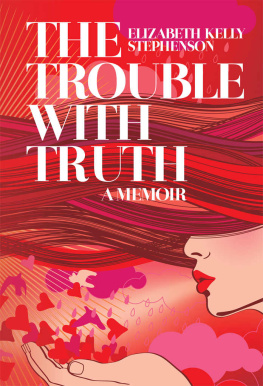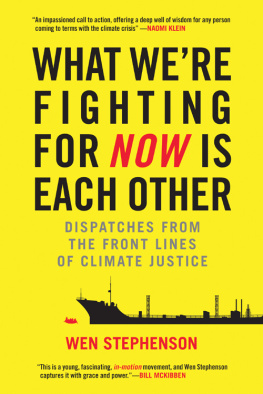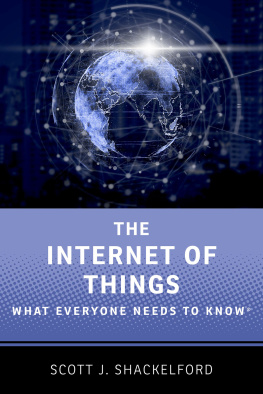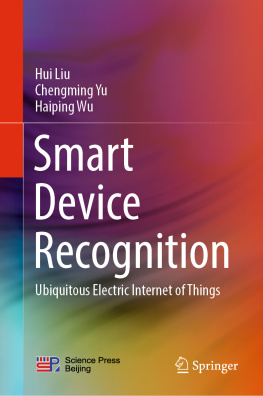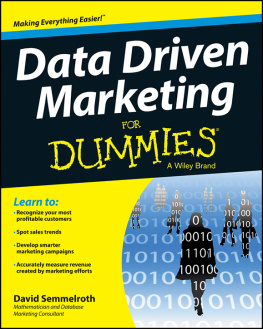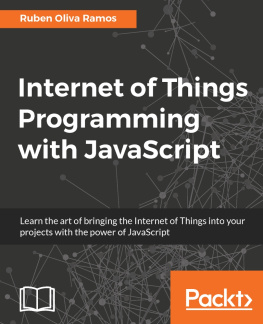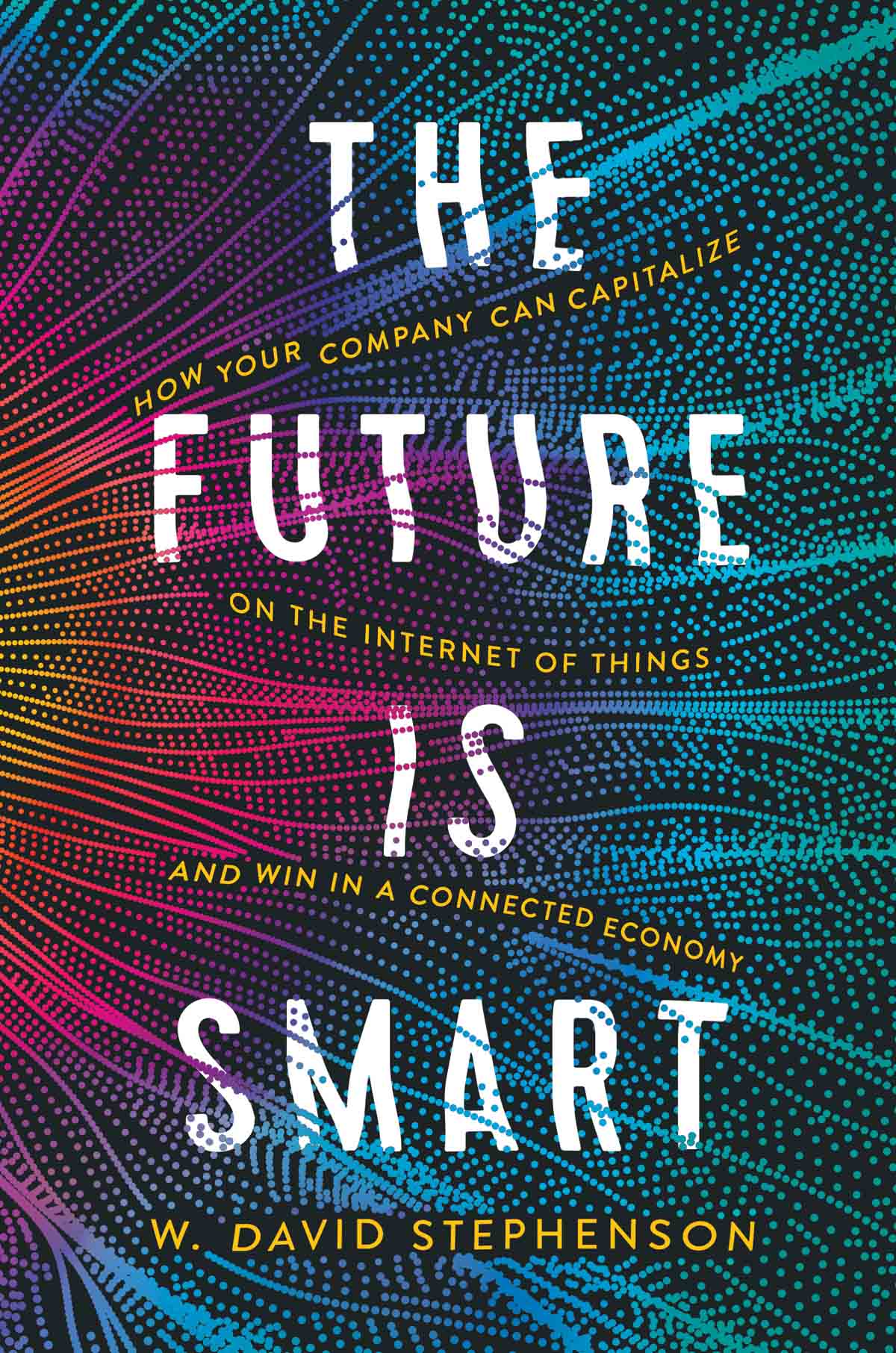Information about External Hyperlinks in this eBook
Please note that footnotes in this ebook may contain hyperlinks to external websites as part of bibliographic citations. These hyperlinks have not been activated by the publisher, who cannot verify the accuracy of these links beyond the date of publication.
2018 by W. David Stephenson
The Future Is Smart
All rights reserved. No portion of this book may be reproduced, stored in a retrieval system, or transmitted in any form or by any meanselectronic, mechanical, photocopy, recording, scanning, or otherexcept for brief quotations in critical reviews or articles, without the prior written permission of the publisher.
Published by HarperCollins Leadership, an imprint of HarperCollins.
Book design by Elyse Strongin, Neuwirth & Associates.
ISBN 978-0-8144-3977-7 (eBook)
Epub Edition June 2018 9780814439784
Library of Congress Cataloging-in-Publication Data
Names: Stephenson, W. David, author.
Title: The future is smart: how your company can capitalize on the Internet of thingsand win in a connected economy / W. David Stephenson.
Description: New York: American Management Association, [2018] | Includes index.
Identifiers: LCCN 2018008178 (print) | LCCN 2018010249 (ebook) | ISBN 9780814439784 (ebook) | ISBN 9780814439777 (hardcover)
Subjects: LCSH: Technological innovationsManagement. | Internet of things. | New products. | Strategic planning.
Classification: LCC HD45 (ebook) | LCC HD45 .S8165 2018 (print) | DDC 004.67/8068dc23
LC record available at https://lccn.loc.gov/2018008178
ISBN 978-0-8144-3978-4
Printed in the United States of America
18 19 20 21 22 LSC 10 9 8 7 6 5 4 3 2 1
To my sons:
Alex, Nat, Jared, and Jeremy
And my grandchildren:
Grace, Harper, Inti, Jack, Samantha, and Sophie
Their lives will be enriched by the Internet of Things,
provided we develop it wisely.
CONTENTS
Guide
The potential growth that the Internet of Things (IoT) brings to any sector, any company, and even any citizen is undeniable. The vision of an intelligent world, with sensor-filled cities and companies, allows us to imagine a more efficient, habitable, safe, and resilient world. We are experiencing the transition caused by a merger between the physical and digital worlds, we are facing the fourth industrial revolution, and we are just starting to lay the railroad tracks that will make it possible.
By now, everyone in the tech industry has realized that it is not a matter of IF but WHEN it is going to explode. But as an IoT company that prides itself on frequently partnering with well-established companies, we at Libelium have learned that not all companies immediately understand the IoTs benefitsand challenges. The Future Is Smart will be a handy tool to help convince these skeptics how the IoT will aid themor leave them in the dust if they dont begin to embrace it.
This is also the first time that we have experienced an industrial revolution within a digital era, making it more challenging for executives of older companies to adapt. Technology evolves quickly without a hint of a standard to adopt, and the myriad of communication protocols, sensors, and cloud platforms overwhelms even the biggest companies. And just when you think you have found all the pieces, you realize that you also need domain experts to analyze the data and that cooperation is absolutely essential. The power of the ecosystem and your ability to integrate it inside and outside your company drives the battle for the IoTs interoperability, in which some of us try to shed light by bridging hardware devices and software services.
After twelve years in this market leading Libelium as CEOeven before the IoT was a termI have seen the multiple sides of this revolution, such as cost-savings in factories, production increases in agriculture, enhanced safety in roads, forest fire detection, monitoring and reducing pollution, and increased quality of life for citizens. In short, technology is a tool that benefits economic growth, creates jobsyes, no doubt hereincreases demand, improves production processes, and stimulates the new generation of business models.
But this promise also brings challenges, which The Future Is Smart emphasizes.
The perversion of technologys use and its applications, especially as they affect personal and corporate privacy and security, is evolving faster than we are able to adapt to. The Cambridge Analytica scandal exposed the boundaries between giving up on privacy and manipulation. It involves trade-offs. Last year, a drone manufacturer defined no-fly zones in some countries to prevent them from being used in terrorist attacks, which also restricted the potential use of these devices for sending humanitarian aid. Before going further on autonomous vehicles, we should first decide whose lives, motorist or pedestrian, we want to protect first. We should not allow technology to advance faster than our ethical decisions, and we need tons of awareness for that. Stephensons decision to make privacy and security the first of his IoT Essential Truths drives that home.
Access to more data forces us and our companies to be more rational by installing what I expect to be the datocracy era. Because it is no longer only about gathering data but about giving a context to transform it into useful and valid information. The major challenge is not just to lead the change in our organizations to take advantageor sometimes just to survivein this new world but also how we decide to use and share daily technology. This new era can promote transparency in government decisions and thus, hopefully, the biggest legacy of IoT and Smart Cities will be more democracy. As another of the books Essential Truths states, we must make the difficult transition from hoarding data, as we did in the past, to sharing it for mutual benefit.
With this in mind, whoever does not want to join this revolution always has the option to live in a house in the mountains, without risks, without worries and, of course, without the internet. The rest of the people must read this book!
A LICIA A SN ,
co-founder and CEO of Libelium, Zaragoza, Spain
The Internet of Things is primarily about stuffmaterial thingsespecially as it is increasingly merged with the digital. However, I think its equally about a fundamental shift in how we view and manage the world around us: learning things we never even saw about the material world, let alone understood, and then improving on them.
I wrote about the IoT for the first time around 2000, when the concept was referred to as ubiquitous computing. I wrote about a nifty pipeline leak detection sensor that was self-powered by the pipelines vibration. Think about a remote pipeline in the middle of nowhere developing metal fatigue, and repair crews pinpointing the problem and getting there in time to make repairs before theres a leak. A win-win for the company and the environment.
I returned to the concept with a brief passage in my 2011 book, Data Dynamite,). I found the IoT concept fascinating and vowed to return to it after finishing the book.
I did that in late 2012, focusing my blog on the topic and writing an e-book, SmartStuff, on the concept. Then SAP selected me for a project, creating an e-guide to the IoT for C-level executives, Managing the Internet of Things Revolution. Ultimately, that project led me to this book.
The other factor influencing the book was my work in the 90s to promote a concept I called natural wealth, which sought to bring the 200+-year-old industrial economy into line with the 4.5-billion-year-old natural economy, which constantly evolves its products, makes them out of locally available materials, assembles them at ambient temperatures, and makes productive use of its wastes. Until our recent attempts to muck things up, the natural economy has evolved pretty well.





